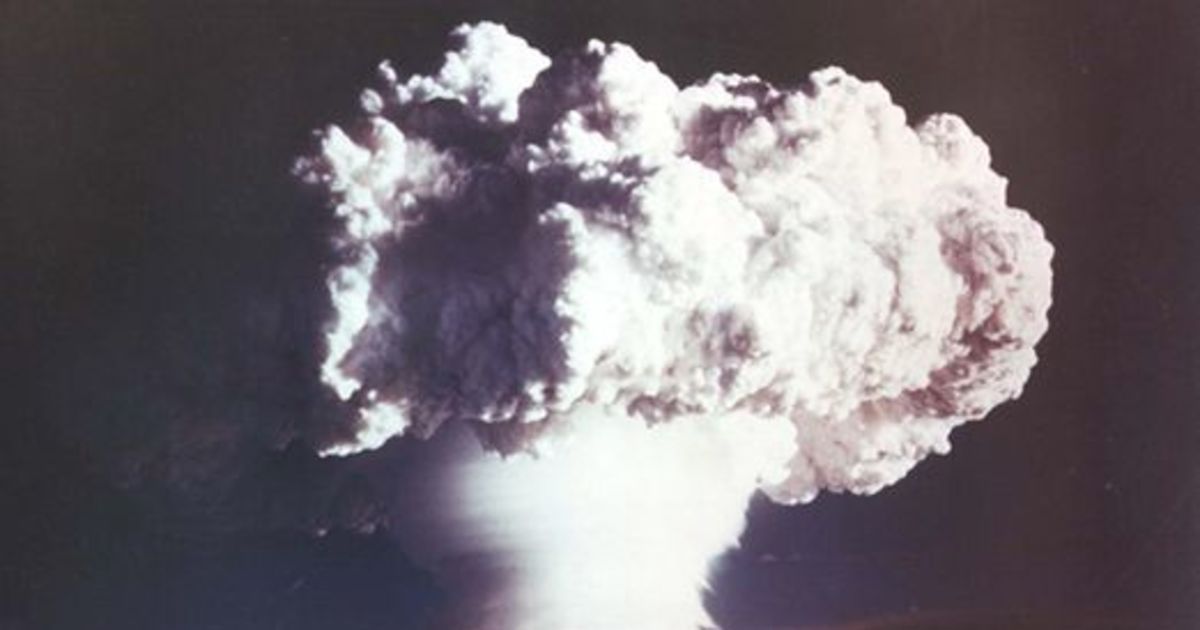France’s new high commissioner to French Polynesia has heard calls for support and compensation for atolls near France’s nuclear weapons test sites.
Eric Spitz made his first tour of the outer islands since arriving from France last month to discuss France’s efforts to overcome the legacy of testing in line with President Emmanuel Macron’s pledge to “turn the page” on the tests.
Spitz visited Mangareva and Tureia, which are among the closest inhabited atolls to the former test sites of Moruroa and Fangataufa, used for more than 190 tests between 1966 and 1996.
The High Commissioner is traveling with the French Prime Minister’s special adviser on the consequences of nuclear testing, Michel Marquer, and the chief medical officer of the nuclear test center surveillance service of the Directorate General for Defence, Marie-Pascale Little.
The government delegation informed the inhabitants of the atolls of the latest findings on residual radiation and the risks emanating from the test sites, weakened by dozens of underground detonations.
Tureia Mayor Tevahine Brander said she would like France’s support because some residents had given their lives for France to secure its nuclear deterrent.
“Maybe the French state has taken a big step today on the nuclear issue, but my people will always remain vigilant on this subject. Our elders have endured a lot of suffering,” she said.
Mayor of Rikitea on Mangareva Vai Gooding also called for compensation, with locals telling visitors of their lingering concerns.
Jerry Gooding, who is part of the anti-nuclear association Association 193, told Tahiti-infos that “in Rikitea, there are victims who have died, and their children also have cancer, while they are born after the nuclear tests. This is why the Association is calling for a transgenerational study on the genetic impact of the tests.”
“Macron went to ask forgiveness in Algeria but did not ask forgiveness from the Polynesians. He must come and ask forgiveness from the Polynesians”, he added.
One resident, Benoit Urarii, said “everyone knows Hiroshima was catastrophic, and everyone knew it was dangerous for people. General De Gaulle knew about it and chose Moruroa because there were fewer people. the first victims. The first attempt in 1966 was catastrophic for us Mangarevans. And we were infected. Nobody can deny it. We weren’t asked our opinion, and we knew exactly how dangerous nuclear testing was.
Medical expert Petit said there was cancer before the nuclear tests.
“It will exist afterwards, and we all know that cancer is not only due to nuclear testing. Nobody is able to say whether it is cancer due to nuclear testing or not. We don’t have a marker yet. that will make the difference,” she said.
Concerns were also raised about a possible collapse of the test area, but Petit said the movements were gradually decreasing, leaving a very low probability of a sliding sediment slab.
She said that whatever happens, possible swells will likely be weaker than what Tureia has experienced before.
Doubt persists as locals point to the complex and expensive technology used to monitor the area around Moruroa, which is still a no-go military zone.
Until 2009, France claimed that its tests were clean and caused no damage, but in 2010, under the leadership of Defense Minister Hervé Morin, a compensation law was passed.
Plans are underway to build a memorial site in Papeete, but a resident of Tureia said it should be on his atoll.
“The center should be here, it’s more honest. But not a memorial to those who took advantage of all these years of nuclear testing to enrich themselves and fill their bank accounts,” he said.
h]Related

